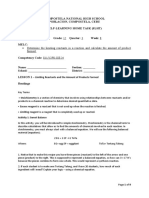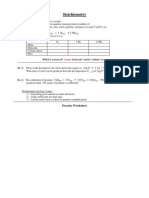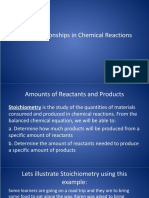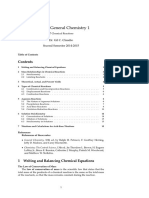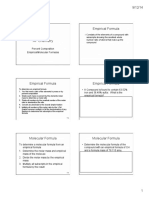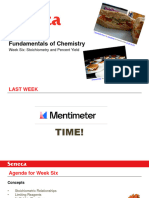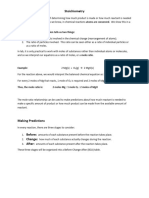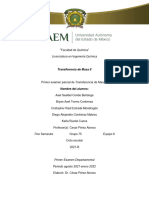0% found this document useful (0 votes)
76 views34 pagesMass Relationships Copy 2
The document covers mass relationships in chemical reactions, focusing on stoichiometry, mole ratios, and calculations for reactants and products. It explains concepts like theoretical yield, percent yield, limiting and excess reagents, and provides sample problems and assignments for practice. The content emphasizes the importance of balanced equations and the practical application of these concepts in chemical reactions.
Uploaded by
marktimothyorbong18Copyright
© © All Rights Reserved
We take content rights seriously. If you suspect this is your content, claim it here.
Available Formats
Download as PPTX, PDF, TXT or read online on Scribd
0% found this document useful (0 votes)
76 views34 pagesMass Relationships Copy 2
The document covers mass relationships in chemical reactions, focusing on stoichiometry, mole ratios, and calculations for reactants and products. It explains concepts like theoretical yield, percent yield, limiting and excess reagents, and provides sample problems and assignments for practice. The content emphasizes the importance of balanced equations and the practical application of these concepts in chemical reactions.
Uploaded by
marktimothyorbong18Copyright
© © All Rights Reserved
We take content rights seriously. If you suspect this is your content, claim it here.
Available Formats
Download as PPTX, PDF, TXT or read online on Scribd
/ 34













